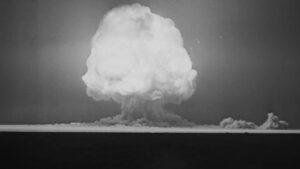“Uncover the Fiery Origins of the Molotov Cocktail: A Name That Speaks Volumes of War and Rebellion!”
While improvised incendiary devices have existed for centuries, the Molotov cocktail as we know it first emerged during the Spanish Civil War of 1936-1939, in which the right-wing Falangist forces of General Fransisco Franco fought left-wing Republican forces for control of the country. Franco’s forces, though equipped with the latest combat aircraft by its fascist allies Germany and Italy, were largely lacking in tanks and anti-tank weapons, while the Republicans, backed by the Soviet Union, fielded the latest Russian T-26 and T-28 tanks. The Loyalists were thus forced to improvise their own anti-tank weapons, including satchel charges – essentially shoulder bags filled with explosives – and petrol bombs. While flame might seem like an ineffective weapon against a tank, if a large enough fire can be started on the vehicle’s rear deck, it can starve the engine of oxygen and cause it to shut off, rendering the tank immobile and vulnerable. Most tanks of this era were powered by gasoline instead of the less-flammable diesel, so a fierce enough conflagration could also ignite the fuel tanks or ammunition stored inside the hull. Finally, smoke could be drawn by the ventilation fans into the crew compartment, suffocating the crew and forcing them to bail out. Loyalist forces used a wide variety of incendiary devices throughout the conflict, from the classic glass-bottle petrol bomb to blankets soaked in gasoline or kerosene thrown onto tanks from a high window.
However, the petrol bomb would not get its now-ubiquitous name until the Soviet-Finnish Winter War of 1939-1940. In the late 1930s, the Soviet government of Josef Stalin grew increasingly paranoid of the supposed threat posed by neighbouring Finland – especially to the strategically important city of Leningrad which lay only 32km from the Finnish border. In October 1939 the Soviets opened negotiations with Finland, demanding they cede territory along the southern end of the border in exchange for Soviet territory in Karelia to the north. The Finns refused, and on November 30, 1939, the Soviet Union invaded Finland.











